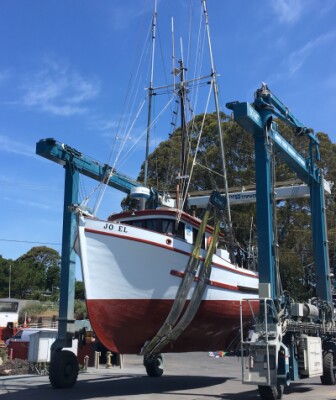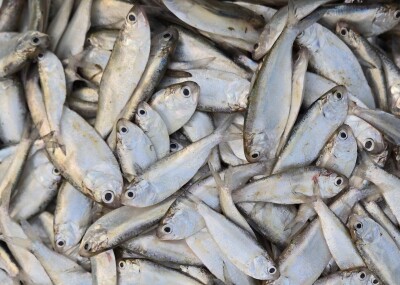Northeast Groundfish
Huge cod cuts devastate historic fleet,sending fishery into uncharted waters
NMFS is offering quota carryovers, more opportunity to harvest monkfish and to pick up the tab for at-sea monitoring costs. But it looks like little can ease New England groundfishermen's final reckoning with Gulf of Maine cod stocks.— Kirk Moore
Alaska & Pacific Sardines and P-codIndustry stuck with sardine survey data; P-cod vying with big Barents Sea quotaThe Pacific Fishery Management Council's decision to reduce the sardine harvest quota from 2012's 94,000 metric tons to 66,495 metric tons spotlights problems the industry has with the acoustical and aerial survey data used to determine biomass for 2013.
"It took a major tumble," says Diane Pleschner-Steele, executive director of the California Wetfish Producers Association, in Buellton, Calif.
Fisheries scientists consider many variables in assessing sardine populations, among them hydroacoustic and aerial surveys, as well as point sets — catch samples used to extrapolate school density. Aerial surveys taken in 2012 indicated the biomass was 906,680 metric tons.
The point sets help validate the aerial survey data. However, Pleschner-Steele says, only 14 acceptable point sets could be made in the time available — too few for validation. Hence, point set and aerial survey data between 2008 and 2012 were pooled and averaged out. As a result, the biomass survey estimate was lowered to 696,251 metric tons.
The industry also questions the hydroacoustic surveys done in the Pacific Northwest. Those surveys, Pleschner-Steele says, indicated that the total biomass was just 14,000 metric tons. Yet sardine harvesters were landing nearly 50,000 metric tons from the same area and at the same time the surveys were conducted, she says.
One problem, Pleschner-Steele says, is that the transducers mounted on boats conducting the hydroacoustic surveys look straight down and don't see what's off to the sides of the boat.
"The way the transducer is mounted, they're missing the top 10 meters of the water column," she says. "The fish move to the side of the boat, and they're missing them."
While a total re-evaluation of stock assessment models will be up for consideration in 2014, the criteria underpinning this year's quota come from the formula the council adopted in 2011.
"They're not allowed to change anything," Pleschner-Steele says of the criteria used the past two years. "They're basically turning the crank on the same model, and we're stuck with what we've got."
If this year's fishing pace matches last year's, the fleet can expect heavy landings. Last year during the second harvest period running from July 1 to Sept. 14, seiners landed almost 52,000 metric tons, most of which came from Oregon and Washington.
"The guys up in the Northwest were locked and loaded," Pleschner-Steele says. "They did really well."
The 2012 West Coast harvest totaled 100,206 metric tons worth $21.2 million, according to Pacific Fisheries Information Network data. That's up considerably from the 2011 totals of 46,745 metric tons valued at $9.7 million. This year ex-vessel prices, as they did in 2012, are tracking at $200 per ton.
In the Pacific cod fishery, Bering Sea trawlers, longliners and pot fishermen will work on a quota of 262,900 metric tons, up slightly from 2012's 261,000 metric tons. In the Gulf of Alaska, the fleet went after 68,250 metric tons, up from 65,700 in 2012.
Of significant consideration this year is how extra volumes of Atlantic cod from the Barents Sea will affect world markets. Norway's Ministry of Fisheries and Coastal Affairs announced a 2013 shared quota (between Norway and Russia) of 1 million metric tons late last year.
That's a 249,000 metric ton jump from the 2012 quota, leaving the Alaska industry to wonder how the extra production will affect markets in general, particularly in market sectors trading headed and gutted cod.
The surge of frozen products — and the ensuing ex-vessel price drop — affected Homer pot fishermen in February, when amid stormy weather they got 30 cents per pound for their deliveries. Moreover, fishing was spotty during the smaller tides of the month.
"We're 10 cents down from last year," says Glen Carroll, who owns two cod boats that fish out of Homer. "Against the backdrop of last year" — one of Carroll's best ever in terms of catch and prices — "it seems dismal."
— Charlie Ess






